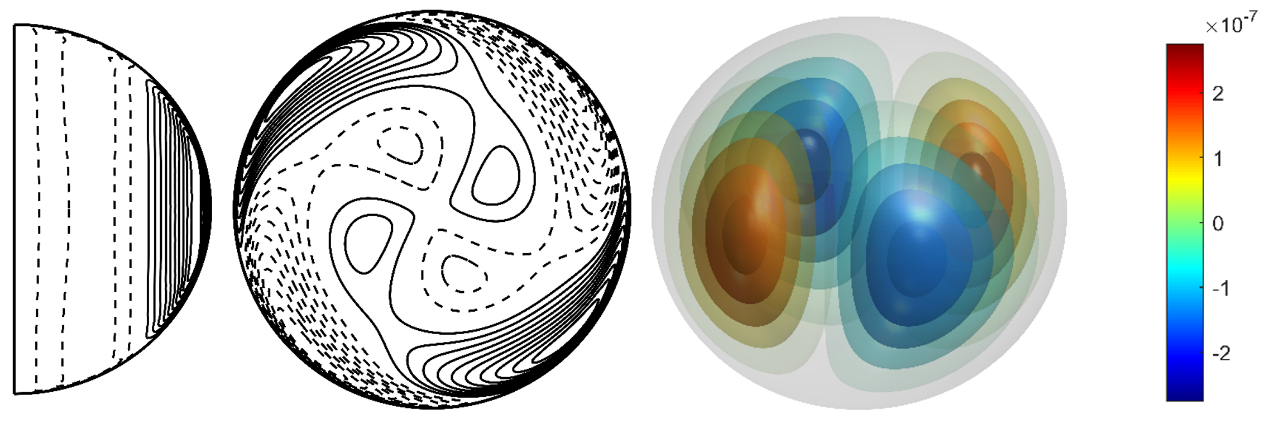Convection inside a celestial body plays a highly important role in thermal evolution, chemical mixing, and magnetic field generation. Examples are commonly seen in planetary fluid interiors, and in convective zones of stars.
However, in a rotating fluid system, due to the dynamical effect of the Coriolis force, there is no simple global criterion by which one can straightforwardly judge whether thermal instability takes place.
Recently, researchers led by Dr. KONG Dali and Ph.D. student LI Wenbo from the Shanghai Astronomical Observatory (SHAO) of the Chinese Academy of Sciences (CAS) carried out linear onset analysis for thermal inertial convection in oblate spheroidal cavities, elucidating how thermal convection takes place in extremely rapidly rotating planets or stars such as Jupiter, Saturn, and α Eri, etc. The study was published in
Physical Review Fluids on Oct. 27 and selected for inclusion in the American Physical Society’s outreach to the press.
In this study, the researchers formulated and studied the problem of thermal instability for the first time in rapidly rotating oblate spheroidal Boussinesq fluids, whose geometrical shapes are self-consistently determined by the theory of figure.
Using a global asymptotic analysis method, they systematically explored the dependence of critical properties on the oblateness of spheroid. “For a rotating planetary fluid that is as flattened as Jupiter or Saturn, the critical buoyancy parameter significantly exceeds the corresponding value predicted by a spherical model,” said Dr. KONG.
The result hence indicated that the previously reckoned efficiency of convective heat transfer in rapidly rotating planets or stars might be interestingly different from reality.
“In the future, more attention should be paid to the geometrical factor in rotating convection and its influence on the evolutionary time scale of celestial bodies,” said Dr. KONG.
In their media tip for press, the American Physical Society shares the perspective: “The fast rotation of planets like Jupiter and Saturn make them bulge out enough that they can’t be treated as spheres. Investigating the thermal instabilities in oblate spheroids will help researchers better understand the convection processes in these planets and could also lead to insights into very flattened systems like accretion disks around black holes.”
The left two panels respectively plot the convective flow structures in a meridional cross section, and in the equatorial plane of a spheroid of Jupiter’s oblateness. The right most panel depicts the associated temperature fluctuation.
Contact:
Dali Kong, Shanghai Astronomical Observatory, Chineses Academy of Sciences, dkong@shao.ac.cn
